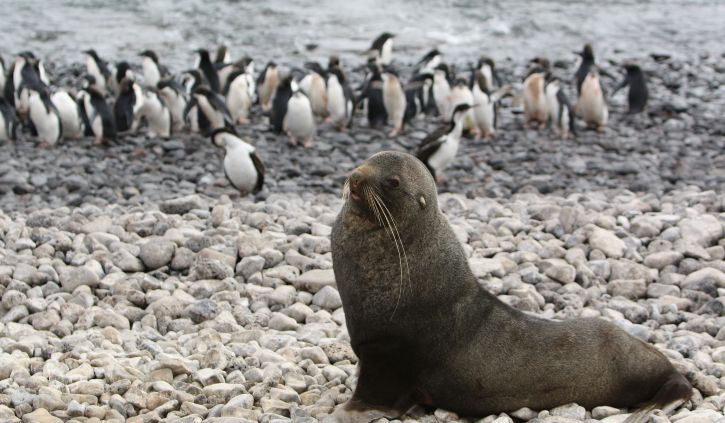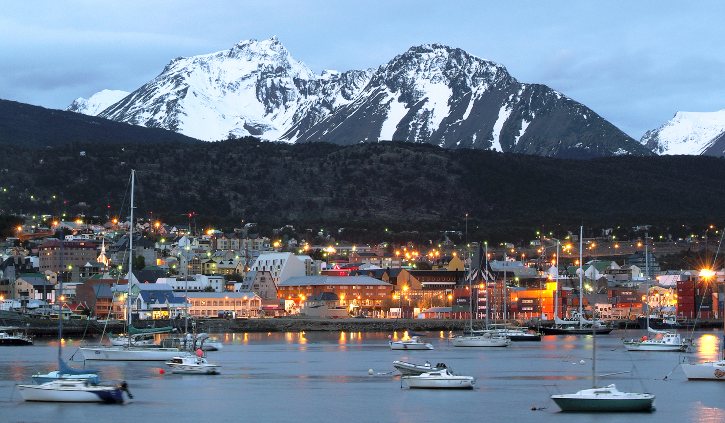THE WEDDELL SEA & LARSEN ICE SHELF
__________________
__________________
| Day | Place | Highlights |
|---|---|---|
| 1 | Ushuaia, Argentina | Set sail, meet the expedition team |
| 2 & 3 | At Sea | Crossing the Drake Passage |
| 4 | South Shetland Islands | Elephant seals, Gentoo, Chinstrap and Adelie Penguins |
| 5 | North Antarctic Peninsula | Stunning scenery, exceptional wildlife |
| 6 | The Weddell Sea | Sail through a labyrinth of ice floe and iceburgs, spot fur seals, penguins and the Weddell Seal |
| 7 & 8 | Larsen Ice Shelf | See the mesmerising, gigantic ice shelves up close |
| 9 | The Weddell Sea | Sail through a labyrinth of ice floe and iceburgs, spot fur seals, penguins and the Weddell Seal |
| 10 & 11 | At Sea | Crossing the Drake Passage towards Ushuaia |
| 12 | Ushuaia, Argentina | Disembark the Le Commandant Charcot |

Hailing as the world’s first hybrid luxury polar exploration vessel, the Le Commandant Charcot combines the top tier of luxury with sustainable development at the heart of the design. Equipped with 135 luxury staterooms featuring elegant and warm stone, wood and leather detailing’s to reflect the natural environment that the ship will be sailing in, the Le Commandant Charcot is setting a new level for opulence in the polar regions. Guests are spoilt for choice when it comes to places to relax and unwind on-board with an abundance of social areas to choose from ranging from two pools (indoor and outdoor), a beauty corner, theater, three different lounges, multiple reception areas and different restaurants to choose from.

-One night’s accomodation in Santiago in 5* hotel
-Return Santiago/Ushuaia economy class flights
-Transfer and meals as detailed

Capital of Argentina’s Tierra del Fuego province, Ushuaia is considered the gateway to the White Continent and the South Pole. Nicknamed “El fin del mundo” by the Argentinian people, this city at the end of the world nestles in the shelter of mountains surrounded by fertile plains that the wildlife seem to have chosen as the ultimate sanctuary. With its exceptional site, where the Andes plunge straight into the sea, Ushuaia is one of the most fascinating places on earth, its very name evocative of journeys to the unlikely and the inaccessible.

Use your days spent in the Drake Passage to familiarise yourself with your ship and deepen your knowledge of the Antarctic. The Expedition Leader will first present the IAATO rules of conduct that must be observed during landings in the region and will explain everything you need to know about the Zodiac outings. Lectures about the history and wildlife of the Antarctic will be an opportunity for you to learn more about this magical region, where every cruise is a unique experience. From the ship’s bridge, you will experience exceptional sailing moments before joining the naturalist-guides on your ship’s exterior decks to look out for albatrosses, cape petrels, and other seabirds flying over the Drake Passage.

Lying close to the northwestern tip of the Antarctic Peninsula, separated by the Bransfield Strait, the South Shetland Islands fall under the jurisdiction of the Antarctic Treaty, suspending claims on their sovereignty. Several countries maintain research bases here, and with plump elephant seals, and crowds of Gentoo, Chinstrap and Adelie Penguins also calling the islands home, it can even feel a little crowded at times. King George Island is the largest and most hospitable island, hosting the majority of the research stations – some of which are populated all-year-round by tiny, hardy crews. Don’t be fooled though, these islands offer extraordinary adventure in one of the most remote locations on earth. The triple peaks of Mount Foster tower above the archipelago, and you’ll feel your heart pumping a little quicker, as you sail into the core of Deception Island’s magnificent collapsed volcano caldera. Hike the luna landscapes within, and even dip into the improbably warm, geothermally-heated waters of Pendulum Cove. Elephant Island, meanwhile, is written deep into the annals of Antarctic expedition legend, as the site where Ernest Shackleton and the stricken crew of the Endurance miraculously survived a harsh Antarctic winter, in 1916.

Throughout your time in the north of the Antarctic Peninsula, you will find yourself in the heart of a spectacular decor in subtle shades of blue and white, surrounded by exceptional wildlife. You will sail through the Antarctic Sound, named after Swedish explorer Otto Nordenskjöld’s ship, which was trapped by the ice during an important scientific expedition in 1902. The gateway to the Weddell Sea, this sound is filled with gigantic tabular icebergs and plates of sea ice drifting northward from the coastal areas of this vast sea. It is home to Adelie penguins and many leopard seals.

Amidst the eerie stillness of the Weddell Sea, you’ll sail your way through a veritable labyrinth of dense ice floe and majestic table icebergs. Sweeping ice platforms sculpt a landscape unlike any other, populated by fur seals, penguins, wandering albatross and other imposing seabirds. The Weddell seal, king of this realm, will welcome you to his territory with a haunting cry that pierces the surrounding silence. You’ll recognise him by his dark grey coat and spotted belly. Weddell seals have the impressive distinction of being able to stay underwater for more than an hour.

On the Weddell Sea, you will sail close to the gigantic Larsen ice shelves. These floating ice shelves help to prevent the erosion of the Antarctic ice sheet. Over the last fifty years, scientists have however observed regular collapses of these shelves, along giant cracks that can be several hundred kilometres long and deep. In 2017, a portion measuring more than 6,000 km2, so barely smaller than Corsica, had broken off the Larsen C ice shelf, forming one of the largest tabular icebergs in the world. This disintegration is believed to be due in part to global warming and melting sea ice.

Amidst the eerie stillness of the Weddell Sea, you’ll sail your way through a veritable labyrinth of dense ice floe and majestic table icebergs. Sweeping ice platforms sculpt a landscape unlike any other, populated by fur seals, penguins, wandering albatross and other imposing seabirds. The Weddell seal, king of this realm, will welcome you to his territory with a haunting cry that pierces the surrounding silence. You’ll recognise him by his dark grey coat and spotted belly. Weddell seals have the impressive distinction of being able to stay underwater for more than an hour.

If there is one place, one sea, one waterway dreaded by tourists, researchers and hardened seafarers alike, it is undoubtedly Drake Passage. Situated at the latitude of the infamous Furious Fifties winds, between Cape Horn and the South Shetland Islands, it is the shortest route to connect Antarctica to South America. Seasoned navigators will tell you that you must earn your visit to the White Continent! As the Antarctic convergence zone where cold currents rising up from the South Pole meet warmer equatorial water masses, Drake Passage harbours a very diverse marine fauna. Don’t forget to look to the sky to catch a glimpse of elegant albatross and Cape petrels, playfully floating about in the wind around your ship.

Capital of Argentina’s Tierra del Fuego province, Ushuaia is considered the gateway to the White Continent and the South Pole. Nicknamed “El fin del mundo” by the Argentinian people, this city at the end of the world nestles in the shelter of mountains surrounded by fertile plains that the wildlife seem to have chosen as the ultimate sanctuary. With its exceptional site, where the Andes plunge straight into the sea, Ushuaia is one of the most fascinating places on earth, its very name evocative of journeys to the unlikely and the inaccessible.